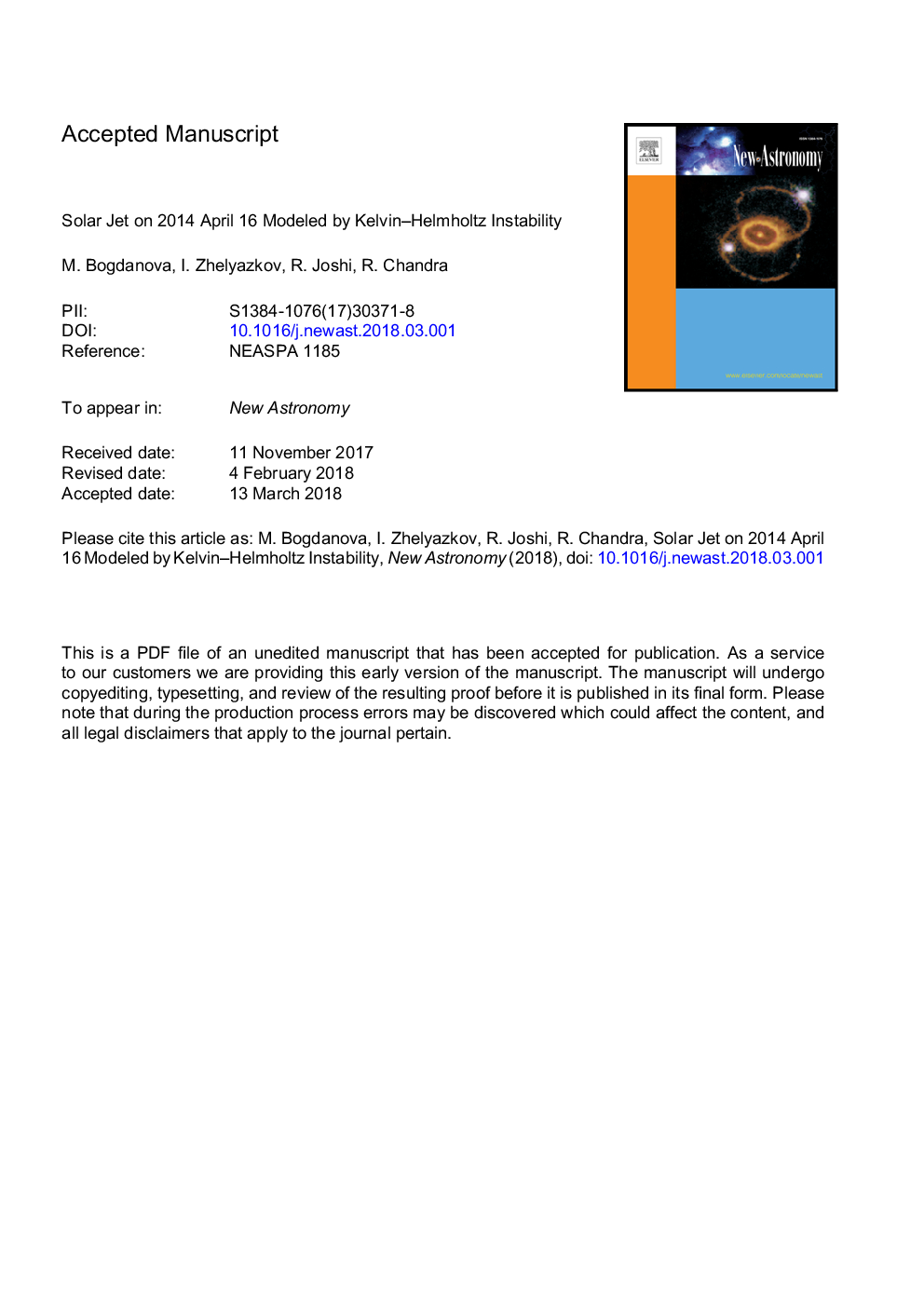| Article ID | Journal | Published Year | Pages | File Type |
|---|---|---|---|---|
| 8141318 | New Astronomy | 2018 | 39 Pages |
Abstract
We study here the arising of Kelvin-Helmholtz Instability (KHI) in one fast jet of 2014 April 16 observed by the Atmospheric Imaging Assembly (AIA) on board Solar Dynamics Observatory (SDO) in different UV and EUV wavelengths. The evolution of jet indicates the blob like structure at its boundary which could be one of the observable features of the KHI development. We model the jet as a moving cylindrical magnetic flux tube of radius a embedded in a magnetic field Bi and surrounded by rest magnetized plasma with magnetic field Be. We explore the propagation of the kink MHD mode along the jet that can become unstable against the KHI if its speed exceeds a critical value. Concerning magnetic fields topology we consider three different configurations, notably of (i) spatially homogeneous magnetic fields (untwisted magnetic flux tube), (ii) internal (label 'i') twisted magnetic field and external homogeneous one (label 'e') (single-twisted flux tube), and (iii) both internal and external twisted magnetic fields (double-twisted magnetic flux tube). Electron number densities in the two media ni and ne are assumed to be homogeneous. The density contrast is defined in two ways: first as ne/ni and second as ne/(ni+ne). Computations show that the KHI can occur at accessible flow velocities in all the cases of untwisted and single-twisted flux tubes. It turns out, however, that in the case of a double-twisted flux tube the KHI can merge at an accessible jet speed only when the density contrast is calculated from the ratio ne/(ni+ne). Evaluated KHI developing times and kink mode wave phase velocities at wavelength of 4 Mm lie in the ranges of 1-6.2 min and 202-271 km sâ1, respectively-all being reasonable for the modeled jet.
Related Topics
Physical Sciences and Engineering
Physics and Astronomy
Astronomy and Astrophysics
Authors
M. Bogdanova, I. Zhelyazkov, R. Joshi, R. Chandra,
